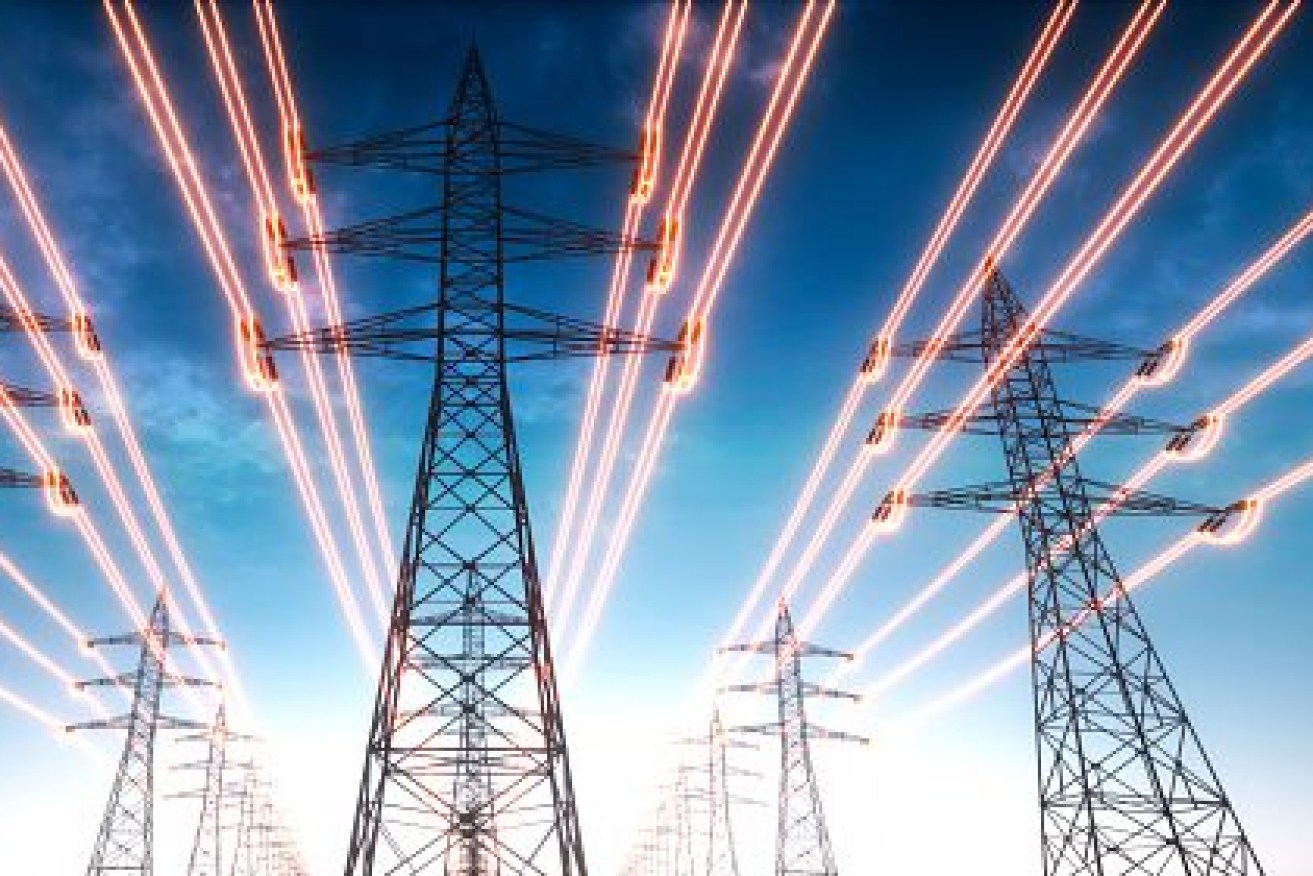Just the weather: Storms, hot summer to blame for 20 per cent hike in power costs
A hot summer and outages triggered by severe storms pushed wholesale electricity prices higher in the first three months of the year, the regulator says.

High voltage transmission towers with red glowing wires against blue sky - Energy concept
A quarterly report released on Thursday showed soaring heat and humidity increased demand and a severe storm in Victoria sparked outages as congestion in the national grid stopped states sharing supply.
Average quarterly electricity prices in Queensland and Victoria increased by 20 per cent and nine per cent respectively from a year earlier, the Australian Energy Regulator (AER) said.
The 2023-24 summer was Australia’s third warmest on record, bringing higher demand for cooling, particularly in Queensland where daily demand exceeded previous records three times during January to March.
Severe storms in Victoria on February 13 felled transmission towers and hit the power supply to South Australia and Tasmania, which contributed to high price events in all three regions.
During the quarter there were 26 high-price events, when the spot market price exceeded $5000 per megawatt/hour – mostly in Queensland (11 events) and Victoria (five).
“The issue of congestion in transmission does present a greater risk of high-price events when we do have extreme weather or demand conditions,” AER board member Jarrod Ball told AAP.
Interconnector and network constraints limited Queensland, NSW and South Australia’s ability to import lower-priced capacity, the report explained.
But Mr Ball said government price caps on coal and gas have helped to stabilise prices in recent quarters.
“Things have generally calmed down and prices are well below where they were in 2022,” he said.
Overall, forward prices for 2024 and 2025 are well below the energy shock peaks of 2022, but were yet to return to historic levels.
Weather and international events were the “X-factors” for changes in future supply and demand, Mr Ball said.
“And weather may be a little bit more predictable than international events,” he said.
There was relatively little new generation but a “significant increase” was scheduled for the rest of 2024 to make up for delays over 2023.
Meanwhile rooftop solar output reached new heights in the last three months of 2023 and remained high.
In Victoria and South Australia there was reduced demand on the energy grid due to the increased generation by rooftop solar on sunny yet mild summer days when air-conditioner use is low.
Mr Ball said he expected rooftop solar to continue to hit fresh records, which must be accommodated.
“That’s very much where a lot of our focus is as well, in terms of some of the decisions we’re making about networks and provisioning for more consumer energy resources,” he said.
East coast gas market spot prices averaged $11.58 per gigajoule, up 6.9 per cent from the December quarter but down 3.4 per cent on a year ago.
Domestic gas spot prices remain close to 2021 levels, driven by low demand over summer, with gas markets vulnerable to shocks going into winter although high storage levels should help.












